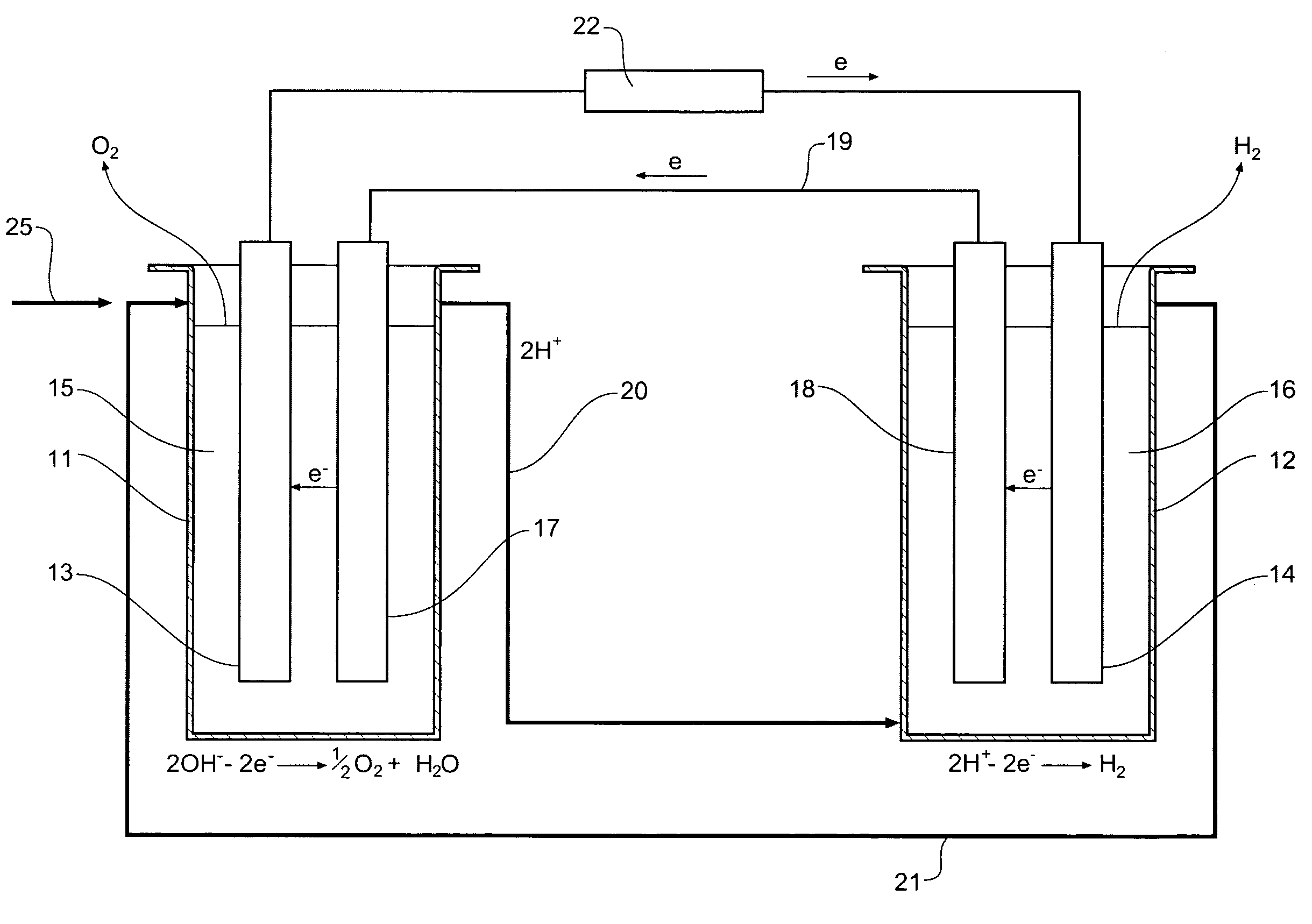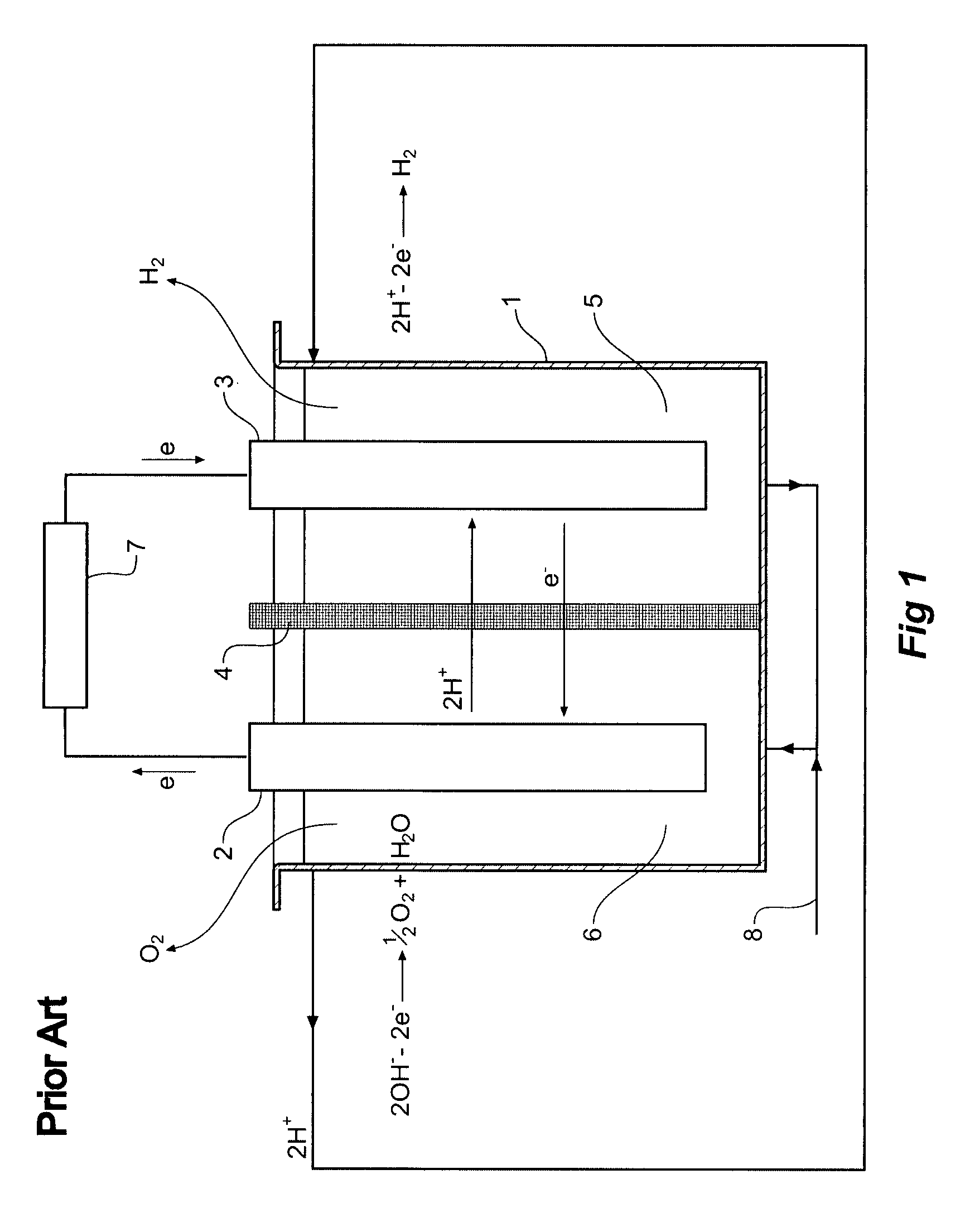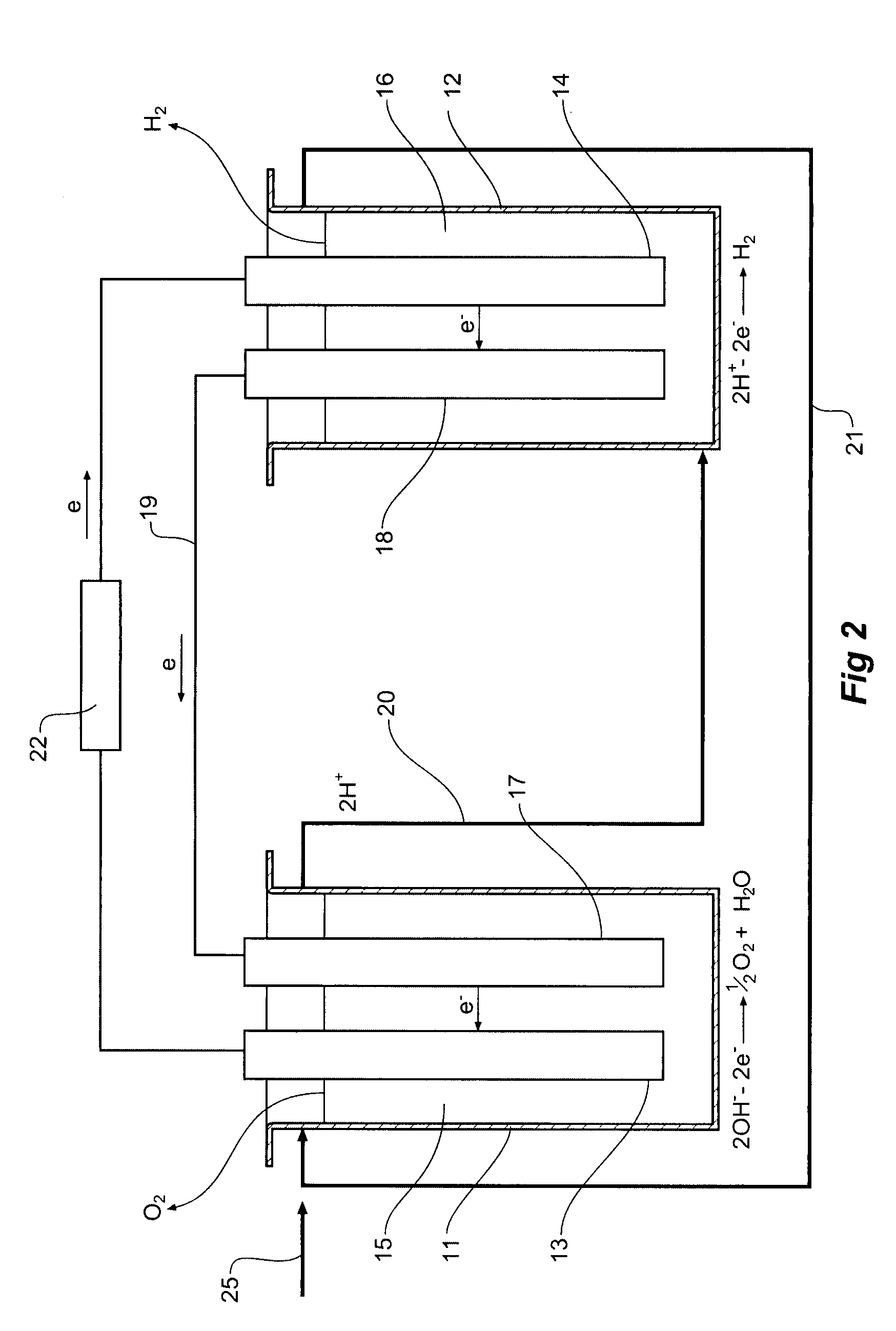Commercial production of hydrogen from water
a hydrogen and water technology, applied in the direction of photosynthesis processes, electrodes, electrical-based machining apparatuses, etc., can solve the problems of low energy efficiency, difficulty in agitating the electrolyte to reduce over-voltage, and the diaphragm cannot allow the mixing of oxygen produced at the anode with the hydrogen produced at the cathode, etc., to achieve easy and quick establishment
- Summary
- Abstract
- Description
- Claims
- Application Information
AI Technical Summary
Benefits of technology
Problems solved by technology
Method used
Image
Examples
Embodiment Construction
[0099]FIG. 1: The Conventional Diaphragm Cell in Water Electrolysis
[0100]The prior art diaphragm cell shown in FIG. 1 for water electrolysis consists of the cell 1, the anode electrode 2 and the cathode electrode 3 connected to the DC power source 7. The anode and cathode electrodes are separated by a diaphragm 4. In operation, the hydroxyl ions are converted to oxygen 10 and water. The excess of hydrogen ions is the driving force for the hydrogen ions to diffuse through the diaphragm 4 through the catholyte 5 to the cathode electrode 3 where the hydrogen ions are reduced to hydrogen gas 9. The electronic circuit is from the DC power source to the cathode electrode through the catholyte through the diaphragm through the anolyte to the anode electrode and to the DC power source. The ionic circuit is normally from the anode through the anolyte through the diaphragm through the catholyte to the cathode electrode. This slow diffusion process can be by-passed by mechanically transferring...
PUM
| Property | Measurement | Unit |
|---|---|---|
| pressure | aaaaa | aaaaa |
| temperature | aaaaa | aaaaa |
| weight percent | aaaaa | aaaaa |
Abstract
Description
Claims
Application Information
 Login to View More
Login to View More - R&D
- Intellectual Property
- Life Sciences
- Materials
- Tech Scout
- Unparalleled Data Quality
- Higher Quality Content
- 60% Fewer Hallucinations
Browse by: Latest US Patents, China's latest patents, Technical Efficacy Thesaurus, Application Domain, Technology Topic, Popular Technical Reports.
© 2025 PatSnap. All rights reserved.Legal|Privacy policy|Modern Slavery Act Transparency Statement|Sitemap|About US| Contact US: help@patsnap.com



